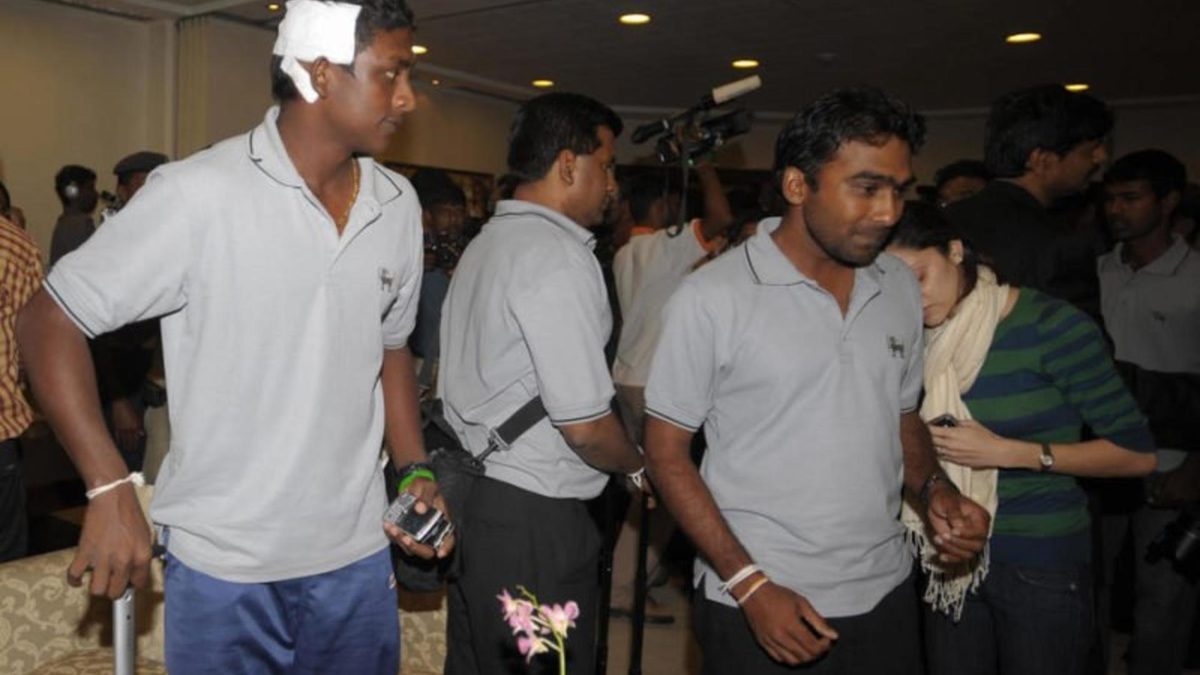
Ten years ago, a bus carrying the Sri Lanka team to a Test against Pakistan in Lahore was ambushed by terrorists. The horrifying ordeal was recreated in the 2010 Wisden Cricketers’ Almanack by Scyld Berry and Nagraj Gollapudi.
Mahela Jayawardene, Sri Lanka’s captain, was finding it difficult to reach his wife on her mobile phone. Already on that Tuesday morning he had tried her twice, but on both occasions the call went straight to voicemail. It was his ritual on tour to call Christina as soon as he boarded the team bus, and it was no different after he had walked out of the Pearl Continental hotel in Lahore and joined the rest of the Sri Lankan cricketers waiting to go to the Gaddafi Stadium.
At about 8.20am, the convoy – comprising a white minivan for the ICC match officials, security vehicles, policemen on motorbikes, a fire engine and an ambulance, as well as the Sri Lankans’ team bus, although not the Pakistanis’ – turned left out of the hotel, did a U-turn, then drove alongside a canal in the residential district of Gulbarg.
“All the roads were supposedly blocked off,” Chris Broad, the match referee who was travelling in the minivan, remembers. “But we saw the occasional tuk-tuk and motorbike on the roads, so they weren’t really clear.”
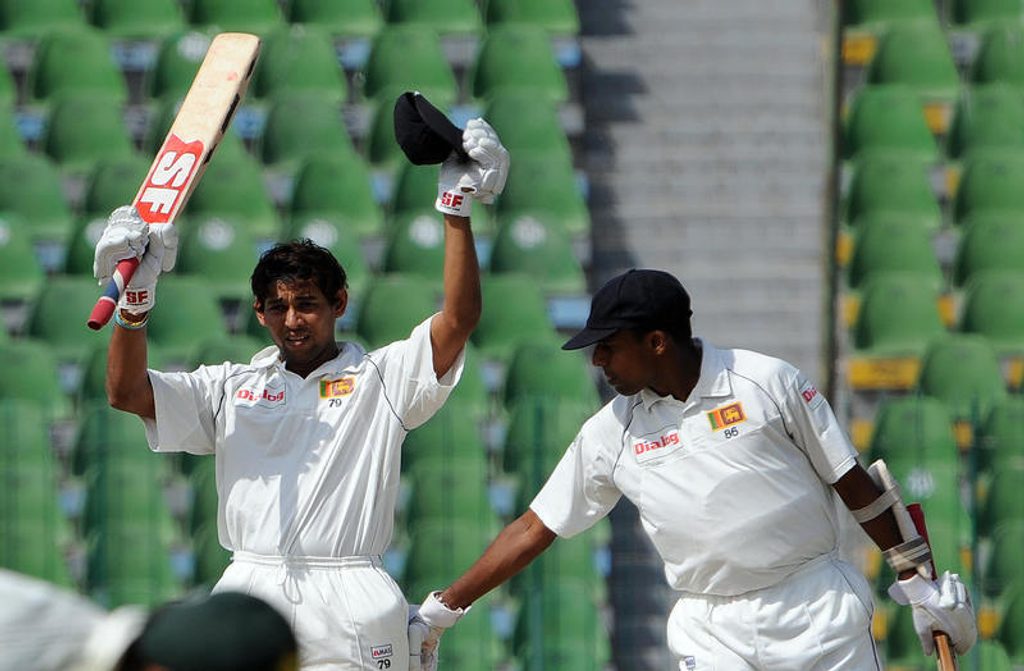 The previous day had seen Tillakaratne Dilshan (left) hit a century while Thilan Samaraweera (right) went to 214
The previous day had seen Tillakaratne Dilshan (left) hit a century while Thilan Samaraweera (right) went to 214
The atmosphere in the Sri Lankans’ air-conditioned bus on March 3, 2009, the third day of the Lahore Test, was no different to any other morning. Some players had opted to draw down the window blinds; some, like Jayawardene, who always sits in the left corner at the back of the bus, preferred to watch the outside scenes, as he tried again to call Christina. There was a bit of banter. Some players listened to music on their iPods, others phoned their loved ones back home.
Paul Farbrace, Sri Lanka’s assistant coach, was pondering how to bowl Pakistan out twice in the next three days. Farbrace sat three seats back on the front left-hand side, behind the new mystery spinner Ajantha Mendis, of whom he had high hopes, with the opening batsman Tharanga Paranavitana behind him.
Kumar Sangakkara and Thilan Samaraweera, who had scored a double century in the first two days of the game, were sitting further back and talking about how to give Jayawardene a victory in his last Test as captain before he stood down to focus on his batting.
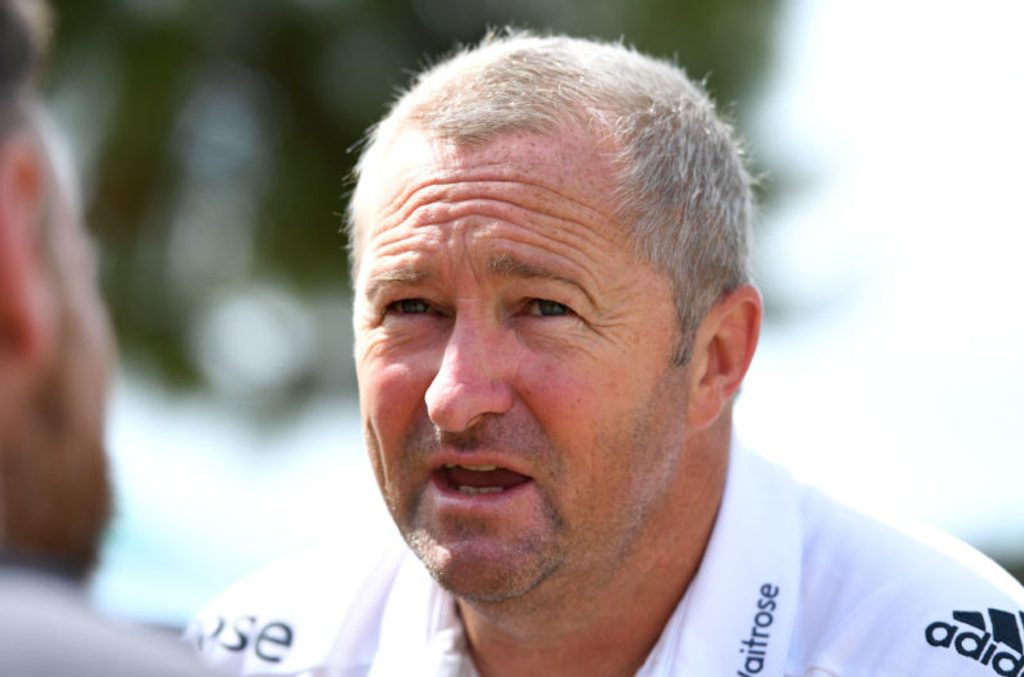 Paul Farbrace was Sri Lanka’s assistant coach at the time
Paul Farbrace was Sri Lanka’s assistant coach at the time
Suddenly, as the convoy approached the Liberty Roundabout, Jayawardene heard sharp, crackling noises – and Tillakaratne Dilshan screaming in Sinhalese to his team-mates to get down below the seats. Jayawardene realised they were being shot at and inadvertently dropped his phone on the floor. “There is a 30-second clip still on Christina’s voicemail of the attacks and surrounding noise,” Jayawardene says. “Including the players screaming inside the bus.”
The first noises that Farbrace heard were like popcorn exploding loudly. He also heard shouts from the back of the bus – Jayawardene had been wounded. “I got hit on the right ankle, and later it was reported it was shrapnel,” Jayawardene says. But a bullet had grazed him, his sock was soaked in blood, and he could not feel his right foot any more.
Farbrace heard shouts of “Get down, get down!” from Dilshan. “I had absolutely no idea that we were being attacked by terrorists. I just thought there was something going on in the street,” he says, shock in his voice still, months later.
For defence, Farbrace tried to wrap himself around the seat in front. Mendis then fell down in front of him, with shrapnel in his head and back. “Just then I felt something hit my right arm, and a piece of metal was sticking out of my arm with blood everywhere,” Farbrace recollects.
Sangakkara, who had just been immersed in his conversation with Samaraweera, dared to raise his head to get a glimpse of what exactly was happening – and brushed with death: “For some reason I moved my head to get a better view and a split second later I felt a bullet fizz past my ear into the vacant seat.”
The bus had been brought to a halt as it reached the roundabout. The terrorists’ first bullets were bang on target: they killed five security men in a leading vehicle, then punctured the front tyres of the Sri Lankan bus, forcing the driver Mohammad Khalil to abandon the wheel. Muttiah Muralitharan, Sri Lanka’s world-record- breaking spinner, recalls: “After about 30 seconds the bus came to a halt, and the bullets were raining on the coach. Fortunately, being a 60- seater bus, there was loads of space and most of us dived into the aisle.”
Sri Lanka’s cricket team were now a stationary target. Paranavitana was hit in the chest and fell down instantly. “I thought he was finished,” was Samaraweera’s initial reaction. “His shirt was full of blood.” Next instant Samaraweera himself thought something had hit his left leg. He felt it and there was blood on his hands. A bullet had pierced the inside of his thigh, a hand’s length from the knee. Others, like Sri Lanka’s coach Trevor Bayliss, were lucky. The window beside which he sat had three bullet holes at chest height. “Had Trevor not got down he would’ve been shot three times,” Farbrace says. “It was remarkable only one bullet actually went into somebody, and it was Thilan Samaraweera.”
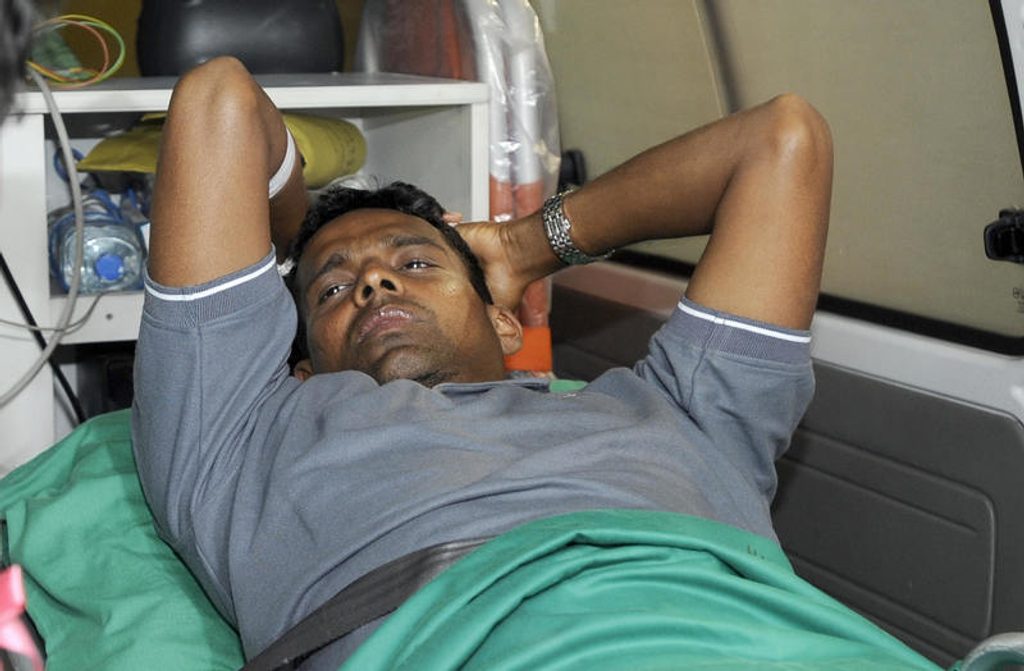 Thilan Samaraweera in an ambulance shortly after returning to Sri Lanka from Lahore
Thilan Samaraweera in an ambulance shortly after returning to Sri Lanka from Lahore
All Sangakkara could think about was that he and his team-mates were now held hostage in the middle of a big city centre: “Standing still next to the roundabout we were sitting ducks for the 12 gunmen.”
And, as the awful minutes passed, the occupants of the bus could do nothing but wait, trapped. “The only thought that passed my mind was when I’m going to be hit next,” Jayawardene says. Farbrace never feared he would die, but admits he was thinking: “Please don’t hit me again.” Muralitharan recalls: “I thought, ‘If I die, it does not matter, but we have to get the bus moving.’”
Outside, the noise was getting louder. Initially, it was only bullets being sprayed at the convoy. Now there were explosions, as the players cowered under the seats. So many windows had been shattered that street dust had seeped through the cracks and holes and was now clouding the view. “We only found out afterwards that a rocket launcher just missed us as we began moving and turned for the stadium gates, the rocket blowing up an electricity pylon,” Sangakkara says. “Khalil saw a hand grenade tossed at us that failed to explode.”
Muralitharan thinks the experience of nearly three decades of civil war back home gave the Sri Lankans a small understanding of how to survive. “The players reacted instinctively and naturally, diving right down on to the floor of the bus rather than on the seats,” he says. “Had we panicked, staying on seats or trying to run, we might have been killed.”
Nobody can precisely say for how long the bus served as a firing range. What is known is that the terrorists’ first strike came soon after 8.30am; and, as the minutes ticked by, two heroes emerged. The first was Dilshan, who was sitting at the front. The seating in the bus was such that, on entering, you took a couple of steps up before turning right, with the driver, Khalil, to your left. Climbing a further three steps took you into the main seating area. So Dilshan was in a higher, and better, position than the driver to see what was happening outside, but only if he put himself in mortal danger by sticking his head up. Yet that is what he did; then he directed the driver to start moving the bus.
“Dilshan’s voice will stay with me forever,” Farbrace says. “He was shouting to the bus driver to ‘Reverse! Reverse!’ as he had seen the terrorists ahead of us. The driver was under fire from the gunmen but Dilshan, who was sitting at the front behind the driver, kept lifting his head and looking through the window to see where the terrorists’ fire was coming from and guiding the driver. The driver was trying to hide under the steering wheel almost, and Dilshan was navigating him.”
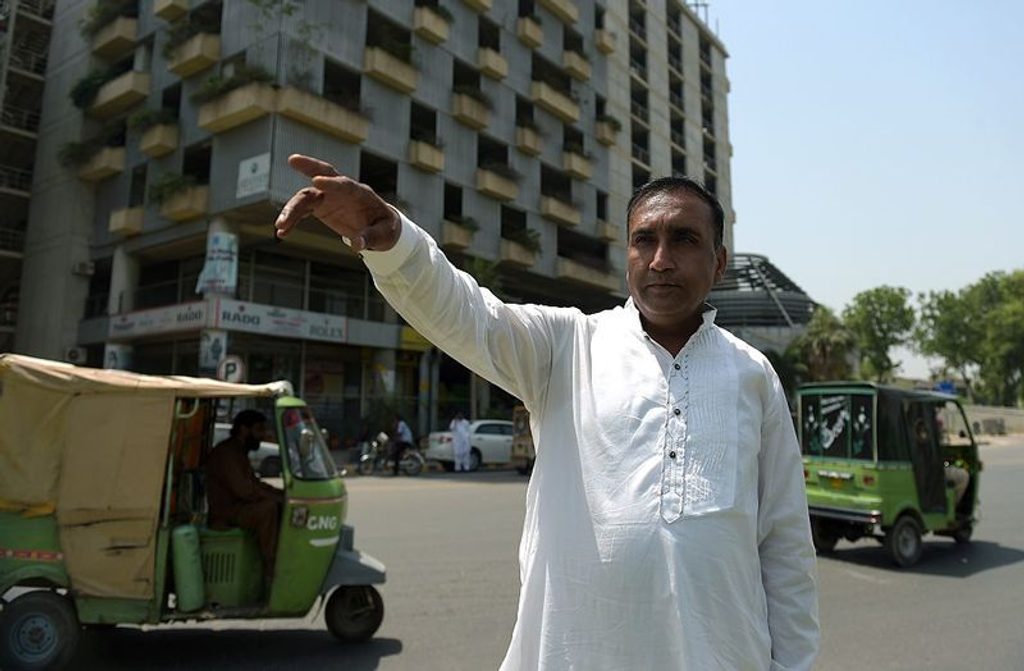 The heroic Mohammad Khalil, pictured in May 2015
The heroic Mohammad Khalil, pictured in May 2015
If Dilshan wins the bravery medal from Farbrace, Sangakkara confers that honour on the driver. “The truth is we owe our lives to the courageous Mohammad Khalil – I will for ever be grateful to him. The tyres of the bus had been shot out, and he was in grave personal danger, exposed to gunfire at the front of the bus. But he was hell-bent on getting us to safety and, somehow, he got that bus moving again. Had Khalil not acted with such courage and presence of mind, most of us would have been killed.”
Khalil crashed past the iron barricades to the Gaddafi, less than half a kilometre from the Liberty Roundabout. When the bus stopped next, the players did not yet realise they were at the ground. Only when people outside started to shout “Get out!” did the players scramble from the bus and help their injured team-mates into the dressing-room.
“As we moved towards the stadium, Tharanga [Paranavitana] announced he was hit as he sat up holding his chest. He collapsed on to his seat, and I feared the worst,” Sangakkara recollects. Muralitharan says: “Blood was pouring down the aisle. I thought he was going to die and we were screaming for an ambulance to take him and Thilan.” Incredibly, the bullet had hit Paranavitana’s sternum at such an angle that it had not penetrated.
Samaraweera realised he could not stand up, and sought the help of Chamara Kapugedera, who lifted him from the bus to the dressing-room, where the players pulled the door shut behind them. They could still hear gunshots in the distance – the Sri Lankan team were now safe, or at least safer, but the minivan holding the umpires and match officials remained stranded at the Liberty Roundabout.
Jayawardene remembers the shooting continuing for quite some time after they had reached the dressing-room. “We could still hear the shots, and then realised it was the umpires’ van that was being shot at. I’m still surprised how the officials escaped, as their vehicle was much smaller and less secure.”
At breakfast in the Pearl Continental that morning, Pakistan’s captain Younis Khan had walked up to the table where Ahsan Raza, the fourth umpire, was sitting to inform him that his team would start for the ground 15 minutes later than usual.
On the first two days of the Lahore Test, both teams had started for the ground at the same time, followed by the match officials’ minibus. But on this Tuesday morning, Younis said his team were very tired after spending much of the First Test in Karachi, and almost two days in Lahore, under the unrelenting sun. In Karachi, the teams and officials had set off at different times, but Younis thought he had better obtain permission here.
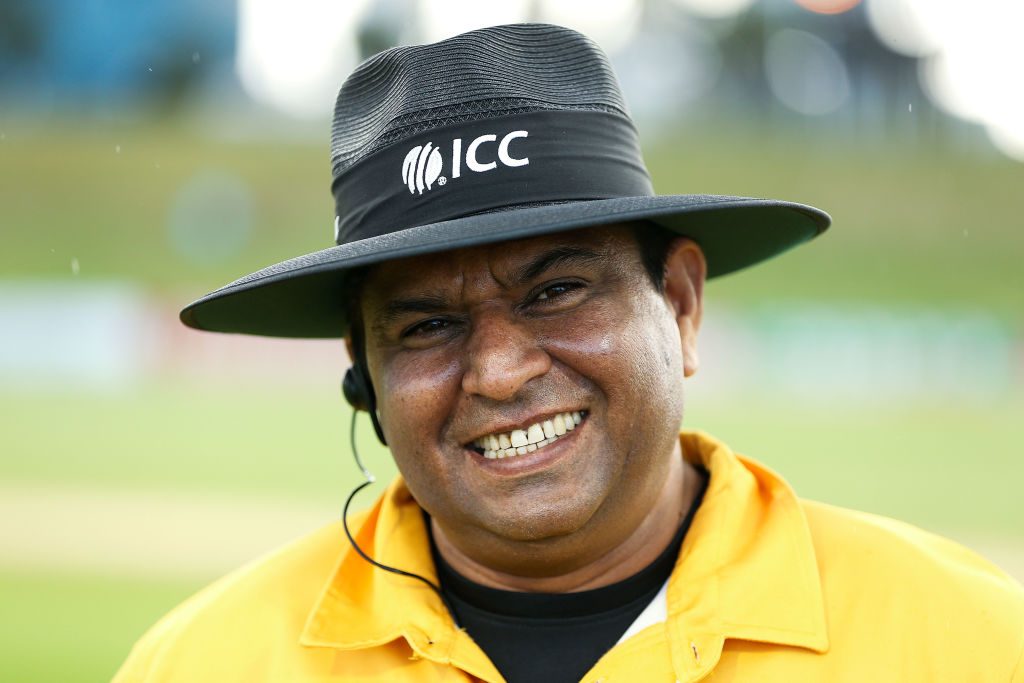 Ahsan Raza, pictured here in 2018, was the fourth umpire for the match
Ahsan Raza, pictured here in 2018, was the fourth umpire for the match
Raza recalls Chris Broad, the match referee, being seated at his table when Younis approached. Broad remembers only that he had been chatting to Danish Kaneria and Kamran Akmal on the next table, and was happy to have some company when Raza joined him – especially as Broad wanted to buy a “good hockey stick” for his nephew and had asked Raza, who comes from Lahore, for help.
Broad doesn’t recollect any conversation with Younis. “When we boarded the minibus, I remember thinking: ‘Why aren’t the Pakistanis here?’ I didn’t see their bus at all. My understanding is that when the shooting started, they were on their way somewhere behind us. Then they were told to turn back to the hotel. I don’t know.”
Abdul Sami Khan, liaison officer for the match officials, had told Broad and Raza that their 12-seater vehicle was ready to depart for the Gaddafi. The other four officials were on-field umpires Simon Taufel and Steve Davis, the third umpire Nadeem Ghauri, and Peter Manuel, the ICC’s regional manager of Pakistani and Sri Lankan umpires. Sami sat alongside the driver; behind them, Raza sat on the left-hand side, paired with Broad to his right; Davis and Ghauri were behind them, with Taufel and Manuel in the back row.
As they approached the Liberty Roundabout, behind the Sri Lankan team bus, policemen in light-blue uniforms were stopping the traffic. “Peter Manuel said afterwards that he saw cars coming out in front of these policemen,” Broad says. “When we were about two-thirds of the way round the roundabout, I heard a popping sound, and Raza told us to get down on the floor of the bus.”
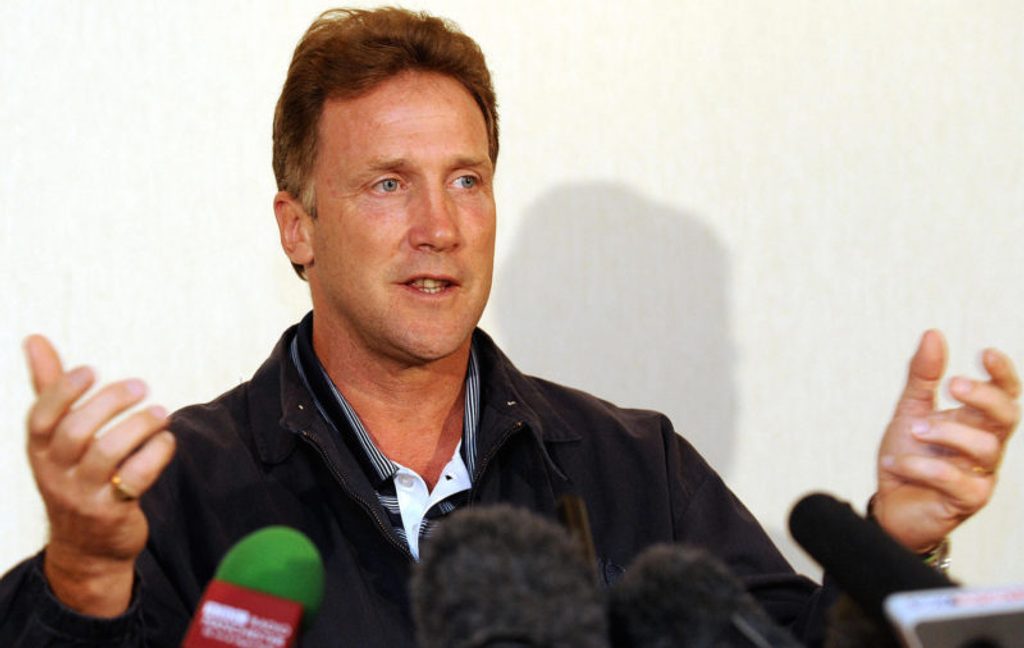 Chris Broad speaking at a press conference at Manchester Airport in the aftermath of the attack
Chris Broad speaking at a press conference at Manchester Airport in the aftermath of the attack
Bullets began ripping through the match officials’ van: about 85 bullet holes were later counted, according to Raza. He lay in what might have been the safest place in the vehicle, curled up in the tiny hollow square by the sliding door. “Broad was screaming and shouting various things in his shocked state,” Raza remembers. He was worried that with his 6ft 4in frame Broad was an easy target for the terrorists.
Broad admits he was terrified, never having heard the sound of real gunshots before. The closest he had come was in 2006: “I had been in a hotel in Colombo, and having lunch with Billy Bowden, when a bomb went off – the Tamil Tigers had tried to kill the Pakistan High Commissioner in Sri Lanka. Billy thought it was a thunderstorm, but I said immediately it was a bomb. The South African players flew home straight away.”
Raza says that, like Sangakkara, he lifted his head up – to try and calm Broad down – and was immediately struck by two bullets. The first one pierced his right lung while the second one burst open his liver. “I felt as if a fireball had exploded inside me,” he says.
The pain became unbearable. Raza started to recite the kalima, an Islamic prayer. He felt his heart was sinking, and his breathing slowed down. Words spurted out of his mouth as he pleaded: “Water, I need water, Chris. Please, Chris!”
“In the bus we were stationary for ten to twelve minutes,” Broad says, “and three-quarters of the way through Ahsan Raza was hit, and all this blood gushed very quickly out of his back and this stream was rushing on to the step of the bus. I arced up and tried to put my hand on his back to stop the flow.”
Like the Sri Lankans, Broad was lucky. “If my head had been four inches higher when the bullet had been fired I would have copped it.” Zafar Khan, the minivan driver, was shot in his heart and killed instantly. The liaison officer Sami, also at the front, was hit in the shoulder. Someone was needed to drive the van to safety. Despite Broad’s best attempts, blood just kept coming out of Raza’s torn body.
“Then the van door opened and a chap in black got in with a pistol, and for a moment we all thought – this is it. He jumped over me and on to a seat to get away from the shooting,” Broad remembers. “I don’t think we were the major target, so the terrorists wandered off into the side streets.” Broad’s fear was that, if this intruder started to shoot, the terrorists would target the van again.
Broad credits the dead Zafar for having pulled up the van beside the stationary ambulance, which had stopped on the roundabout to their left. “We saw the ambulance later at the ground and the whole of the left-hand side had bullets in it, and the tyres were shot out. So there had been a lot of firing from the left side, and if the ambulance had not been there we would have taken those bullets. Our driver was a hero for pulling up alongside it and giving us some cover.”
As the firing quietened down, Broad remembers Nadeem Ghauri put his head up above the seats and looked out of the windows – the glass was no longer there because it had been shot out. “He said, ‘They’ve gone’. Then another chap in black – we found out later they were from the elite force – dragged the dead driver out of his seat and on to the road and drove us towards the Gaddafi.” All this time the side door of the van was still ajar, and none of the passengers had got up off the floor.
When they came to the barricades outside the stadium, there was a lot of shouting because the alarmed troops manning them were ready to open fire at anyone approaching. “We heard metal being dragged across the road, and the bus veered round one barricade and another, then stopped outside the stadium.
The side door opened and Ahsan was just dragged out of the van on to the dusty road. He had been blocking the doorway and had to be moved, but I remember thinking – why does he have to be dragged out like this?” Broad wonders, still.
“We ran into the umpires’ room at the stadium, and the relief was something I’d never known before – tears, swearing, hugs. Everyone realised it had been one of the most terrifying moments of our lives,” Broad says.
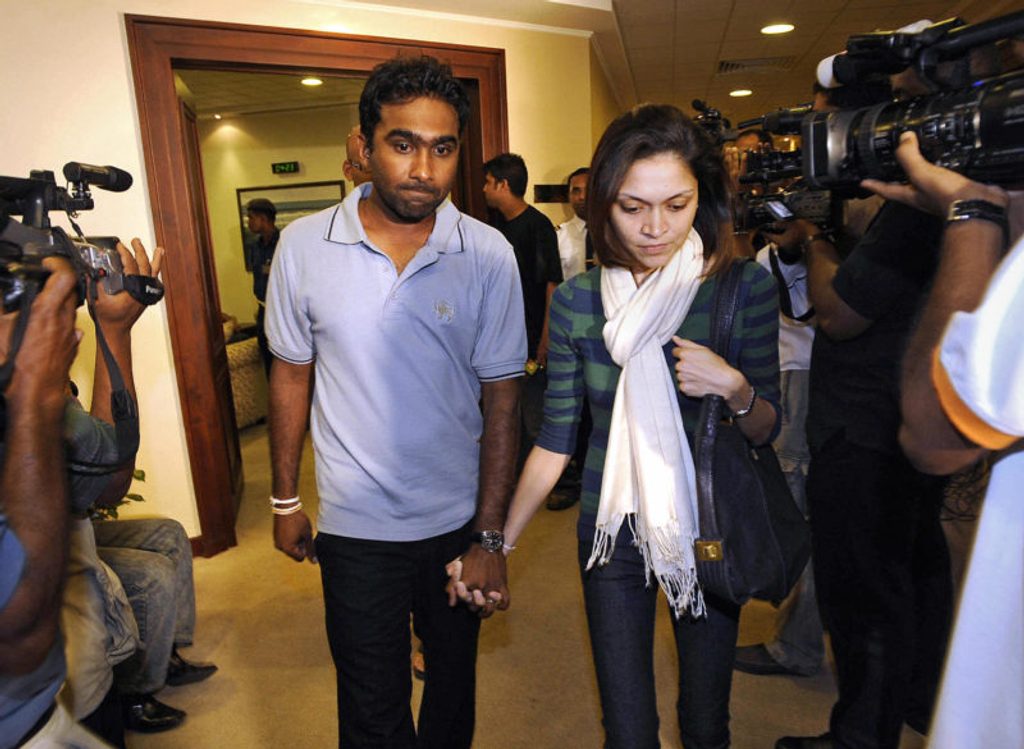 Mahela Jayawardene (left) with his wife Christina (right) after Sri Lanka’s return to Colombo
Mahela Jayawardene (left) with his wife Christina (right) after Sri Lanka’s return to Colombo
In the Sri Lankan dressing-room, meanwhile, the frayed nerves, hurt bodies and numb minds had not yet settled down. Some players retreated into various corners trying to find a free space for themselves to understand what had happened. Some were instantly on the phone; others stared into oblivion. Tears started streaming from some players as they tried to explain the happenings to their families back in Sri Lanka.
Then the steadily settling calm was destroyed by desperate Pakistan Cricket Board officials, security personnel and paramedics who had rushed to the ground along with ambulances. “There was a lot of panic, a lot of anger as people came in and started to mention the names of certain terrorist groups. We were adamant not to get back into the ambulance when the paramedics suggested we go to the hospital. I refused to go back on the road,” Farbrace says. “What we needed was help and support, not commotion.”
The security officials did not know what to do. Players were screaming for doctors. In the ensuing melee, someone suggested they had to calm down. Furious, Jayawardene almost hit the man who suggested it, as he took him by the scruff of his collar and shouted at him to shut up and get a paramedic for two players bleeding profusely. “We were in a state of shock – and this guy was asking us to be patient!” he says, raising the pitch of his voice.
By then Jayawardene had finally contacted his wife Christina. He called her as soon as he entered the dressing-room. Mercifully, she had still not listened to her messages on voicemail.
Ambulances eventually arrived. Paranavitana and Samaraweera were rushed to hospital. But as more people started entering the dressing-room the players feared the terrorists could still come back. So they asked everyone to vacate the room, and only when it was ascertained that an official was genuine was he allowed to enter.
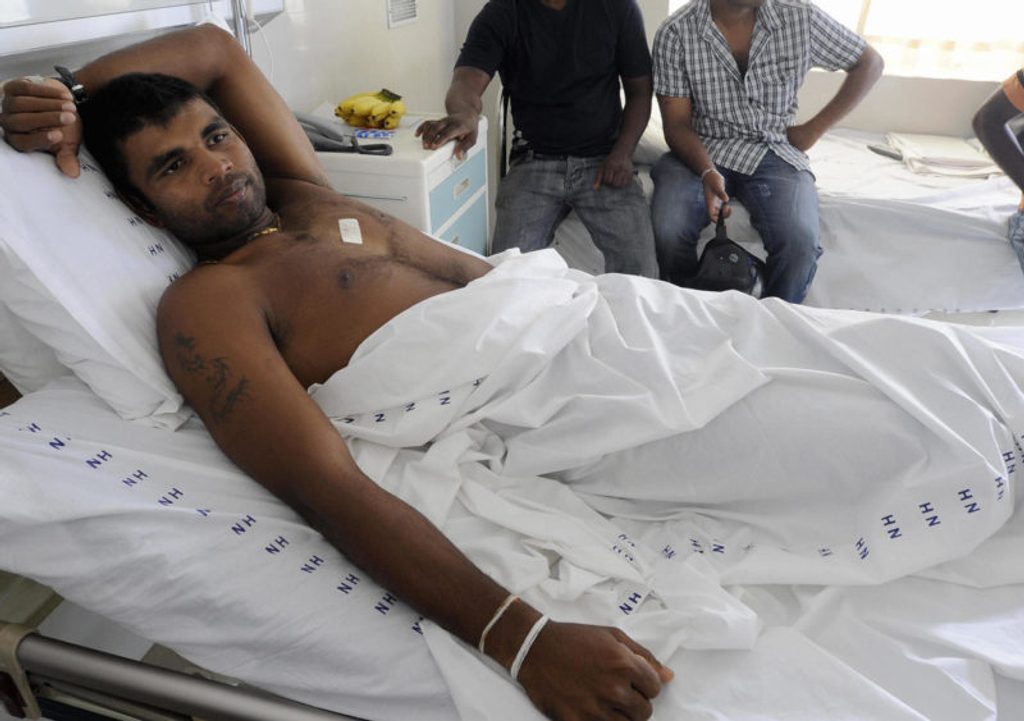 Tharanga Paranavitana in a Colombo hospital after undergoing surgery
Tharanga Paranavitana in a Colombo hospital after undergoing surgery
A television in the dressing-room was replaying footage of the shooting, which allowed the Sri Lankans to view their miraculous escape. But they were alarmed at the media reporting their whereabouts. “When the media was reporting that the players were safe inside the ground, the players were shocked, as that would help the terrorists to rush to the ground,” Jayawardene says.
The Sri Lankan president, Mahinda Rajapakse, called Jayawardene, telling him that he was sending a charter plane straight from Colombo. Hotel staff at the Pearl Continental were told to pack the players’ bags, and after a few hours the party were airlifted by helicopter from the ground to Lahore airport. As captain, Jayawardene did not want to leave Samaraweera and Paranavitana behind. Only when the doctors in Lahore gave the pair an all-clear did the team board the flight.
Sri Lanka were not supposed to be in Pakistan in 2009. Originally, India were scheduled to tour Pakistan for a Test series, but they had pulled out in the aftermath of the terrorist attacks in Mumbai which had been spread over the last dreadful days of November 2008. So the Sri Lankan board had agreed to fill the breach. Their players, obviously, had some apprehensions.
“After the Indians pulled out, and the Australians too refused to tour Pakistan, we were a bit concerned when our administrators accepted the tour,” Jayawardene says. “So we actually questioned the board about the security conditions. They assured us that the Pakistan government had promised us VVIP security, so with those assurances we went ahead with the tour.”
Everyone felt there was a stark difference in security when the action shifted after the Karachi Test to Lahore. “We went to the ODIs and were comfortable with the security around us in both Karachi and Lahore,” Jayawardene says. “But when we went back for the Test series we felt the security wasn’t what it had been during the ODI in Lahore. We questioned that, but people in the know-how and the authorities explained it was fine. We accepted their word at face value because we were no security experts.”
In fact, a move by Pakistan’s Supreme Court had created a power vacuum in Punjab and the provincial capital Lahore. The national opposition leader Nawaz Sharif had been barred from elected office, and his brother Shahbaz, head of the Punjab government, was also ousted. Pakistan’s president Asif Ali Zardari took charge of the province and immediately made changes to key posts in the police and security departments. Nawaz Sharif held Zardari’s move to topple his brother opened up the possibility for the attack.
The intensity of this attack by terrorists – whose identity, to date, remains unproven – can be gauged from what they left behind: a large weapons cache including anti-personnel mines and two unexploded car bombs, a total of eight people killed, and about 20 injured, including eight members of the Sri Lankan touring party.
One of the dead was a traffic policeman, Tanvir Iqbal, who had specifically asked to be on duty at the roundabout so he could see the cricketers. “All the talk that no one would target cricketers seems so hollow now. Far from being untouchable, we are now prize targets for extremists. That’s an uncomfortable reality we have to come to terms with,” adds Sangakkara, now Sri Lanka’s captain.
What still angers the players is that they could never see their 12 masked assailants, who had arrived from nowhere and launched this unprecedented attack on a cricket team. “Now you think about it you feel crazy,” Jayawardene reflects. “We couldn’t do anything about it, that was the sad part. There was no way for us to run, no way for us to hide, but stay on the floor. We couldn’t react. We couldn’t hit back at them. That was a desperate situation. We had no choices.” Sportsmen, normally, do not accept defeat lying down.
Wounds started to heal once the participants reached home. The Sri Lankan board appointed counsellors to help their players heal psychologically. The ICC also told the umpires and Broad to seek counselling, after they had been flown to Abu Dhabi that night and driven to the ICC’s headquarters in Dubai.
Pakistani doctors told Raza it would take him at least 18 months to recover, after 80 stitches were inserted on one side of his body and he lost the use of the lung that had been punctured by a bullet. Yet he returned to stand in a senior game two and a half months after being shot. Raza never allowed his willpower to desert him: once 20 pints of blood had been transfused into his body, he knew he would stand on his feet soon. But he can no longer sit in public places where people smoke, nor can he tolerate strong perfumes. He thanks Broad for risking his life and using his presence of mind to try and stop the flow of blood.
Broad met the Sri Lankans again in September 2009 in Colombo, where he was the match referee during a tri-series: “I chatted to one or two of their players, but didn’t go into it in too much detail. I was so pleased to see all of them – especially Samaraweera who was the most badly injured – back playing again,” he says.
During the Ahmedabad Test in India in late 2009, while travelling back to the team hotel, Samaraweera heard a firecracker flying past the team bus. He jumped out of his seat, and Sangakkara had to hold him tight. Samaraweera, who, in spite of his experiences, had a prolific year otherwise as the leading run-scorer in Test cricket, is now just happy to be alive. He has kept the bullet, which the doctors who operated on him in Colombo gave to his wife Erandathi, saying it was a lucky bullet as it had failed to reach the bone a few centimetres away.
“I think I will keep it all my life,” Samaraweera says with a big smile. “At the moment it is a terrible thing, but with time it may be something like a lucky thing which I can look at and think about in the future.”
Of the day when cricket lost its innocence, and his final Test as Sri Lanka’s captain, Jayawardene has a unique memory – or so it is to be hoped. “It was not the ideal one, but it was a great farewell for a captain. Once you go through all this, everything else becomes immaterial.”








